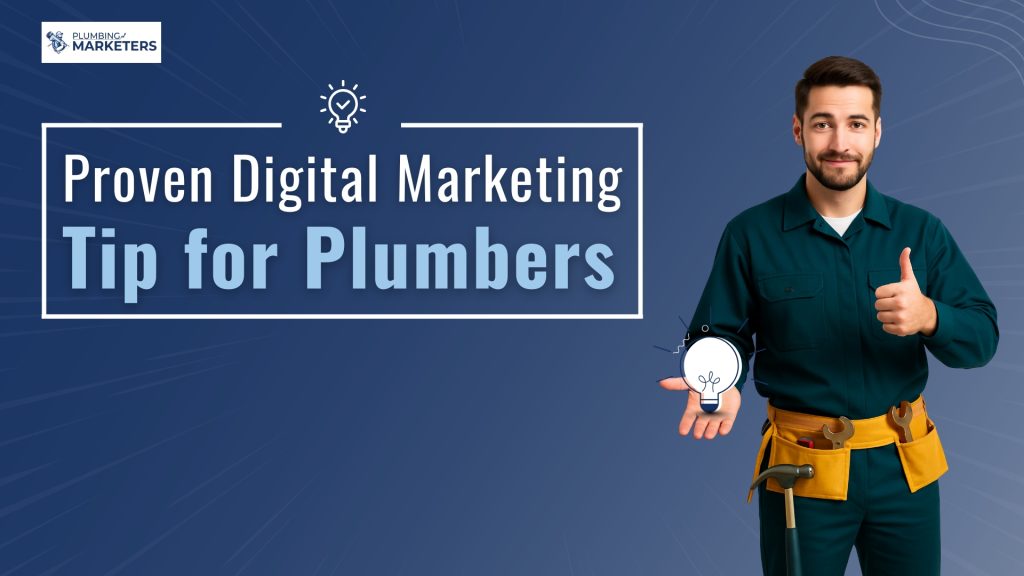Search Engine Optimization (SEO) has a major impact on a plumbing company’s ability to generate leads, increase revenue, and grow consistently. The strategy outlined below is based on more than 1,000 successful SEO campaigns for plumbing businesses over the past 14+ years.
This tested formula covers:
- Why SEO is essential for plumbers
- The search terms customers use to find plumbing services
- What type of content generates the most leads
- Key differences between Local SEO and traditional SEO
- The most effective SEO tools and platforms used by top plumbing companies
- How Google’s AI Overviews Affect Plumbing SEO
- How to spot and avoid misleading SEO advice
- And much more, based on real-world data and experience from the founder of Plumbing Webmasters
Why SEO Matters for Plumbing Companies
Each month, over 11 million searches are made for plumbing-related services.
This high demand creates a constant stream of potential leads for businesses that show up in local search results.
SEO won’t replace your entire marketing strategy, but it will support and enhance every other channel—from branding and paid ads to word-of-mouth. And unlike other tactics, SEO works 24/7, continuously driving traffic and inquiries.
Understanding SEO for Plumbers
SEO for plumbers involves optimizing your website and business listings to appear for relevant search queries on Google and other search engines.
While many guides refer to all search terms as “keywords,” our experience shows that over 50% of real website traffic comes from terms not listed in tools like Semrush or Ahrefs.
This makes sense: just like no two customers speak the same way, they also search differently.
For example:
- One person may search for: “no hot water, low water pressure, Fort Worth”
- Another might type: “plumber near me for Rheem water heater”
Effective SEO for plumbers must account for these unique and unpredictable search patterns, not just high-volume keywords.
Confirmed Google Ranking Factors
Google has publicly confirmed seven ranking factors:
- Backlinks
- User Intent
- Content Freshness
- HTTPS Security
- Mobile-Friendliness
- Page Speed
- Absence of Intrusive Pop-Ups

There are believed to be over 200 total ranking factors, many of which change frequently throughout the day. Because Google rarely discloses algorithm changes, most plumbing businesses turn to SEO professionals for help navigating these constant updates.
Even if you outsource SEO, understanding how it works allows you to make smarter business decisions.
How Homeowners Search for Plumbers on Google?
When someone needs a plumber, they type a phrase into Google. The results they see include websites and business listings optimized for those terms.
The process of researching and targeting these search phrases is called keyword research. However, many SEO tools miss more than half of the phrases your customers use, making it critical to go beyond “keyword-only” strategies.
Foundation Keywords
Foundation keywords are core search terms that combine your service with your location. These are easy to identify and often carry high search volume.
Examples include:
- Plumbing Dallas
- Plumber Houston
- Plumbing Miami
- Plumber Seattle
- Plumbing Fort Worth
You can use tools like Semrush to enter “plumbing + your city” and sort by search volume to identify the most important base terms.
More examples:
- Plumbing repair Dallas
- Plumbing maintenance in Miami
- Plumbing inspection Seattle
Specialty Keywords
Specialty keywords reflect more specific service needs and are used by customers with a clear intent.
Since every plumbing company offers a unique mix of services, specialty keywords will vary.
Start by listing your services:
- Residential Plumbing
- Commercial Plumbing
- Emergency Plumbing
- Drain Cleaning
- Sewer Line Repair
- Water Heater Installation
- Leak Detection
- Pipe Repair
- Hydro Jetting
Use Semrush to research keyword volume for each service. Be sure to set your tool’s location filter to your city, and exclude the location from the term itself when searching (e.g., search for “sewer line repair,” not “sewer line repair Dallas”).
Also, check the national volume to gauge the overall interest in each service.
Example: “Sewer Line Repair”
- National Monthly Searches: 5,400
- Local Volume (Dallas): 140
- Local Population: 500,000
These metrics suggest this is a high-opportunity keyword for Dallas-based plumbers.
Need Help With Your SEO Strategy?
At Plumbing Webmasters, we’ve helped thousands of plumbing companies develop high-performing SEO campaigns with our proven strategies and proprietary tools like DataPins.

With over 14 years of industry-specific experience, we know what works—and what doesn’t—when it comes to ranking, converting, and growing in the plumbing industry.
Let us help you take the guesswork out of SEO and build a strategy tailored to your location, services, and target audience.
Hidden Keywords in Plumbing SEO
While traditional keyword research tools can’t detect certain search terms, these “hidden keywords” still account for more than half of your website’s organic traffic.
You might ask How is this possible?
This insight comes from a detailed case study of over 1,000 SEO campaigns, backed by real data from Google Search Console. Even independent studies, like one from Ahrefs, confirm similar findings.
Hidden keywords are typically long-tail phrases, usually three words or more. Examples include:
- Emergency drain cleaning service Round Rock
- Rinnai tankless water heater installation in San Antonio
- Residential Trenchless Sewer Repair Burbank
Despite the value of tools like Ahrefs, Semrush, and Google Search Console, none of them can reliably detect these long-tail searches.
Try typing one into Semrush; it will likely return “N/A” for search volume.
How to Discover Hidden Keywords?
To uncover hidden search terms, use data from job history in field management tools such as:
- ServiceTitan
- Housecall Pro
- Jobber
These platforms store past job details, which you can export into Google Sheets and analyze for trends.
For a more SEO-focused solution, tools like DataPins, NearbyNow, and GeoJuice allow you to tag real jobs and service areas on your website, helping you rank for specific long-tail terms tied to real locations.
SEO Content That Attracts Plumbing Leads
To rank for the right keywords, you need well-structured content. But ranking alone isn’t the goal your content must convert visitors into leads.
Many plumbing websites publish dozens (or even hundreds) of blog posts in the name of “content is king.” Unfortunately, this often hurts more than it helps.

Why?
Because Google doesn’t index most of those posts, and the ones that do get indexed dilute your site’s overall content quality.
Instead, a strategic content approach works best one it targets relevant keywords and aligns with user intent.
Example Service Page Structure:
Title: Hydro Jetting Services in Fort Worth, TX | [Your Company Name]
Meta Description: [Your Company Name] offers expert hydro jetting services in Fort Worth, TX. Backed by 100+ 5-star reviews, we deliver trusted, high-quality results for homeowners.
Simple? Yes, and it works.
Google’s E-E-A-T Guidelines
As of Google’s March 2024 Core Update, there’s a heightened focus on E-E-A-T content:
- Experience
- Expertise
- Authoritativeness
- Trustworthiness
While E-E-A-T isn’t a direct ranking factor, it influences which content ranks higher. Google uses human reviewers called Search Quality Raters to evaluate if pages meet these standards, and adjusts its algorithm accordingly.
Ways to Demonstrate E-E-A-T as a Plumber:
- Display awards and badges
- Showcase recent jobs with real photos
- Add professional credentials and license numbers
- Use structured data (Schema markup)
- Show team profiles or testimonials
Understanding User Intent
User intent is a confirmed ranking factor in Google’s algorithm. Your SEO content must align with what the searcher wants to accomplish.
There are three types of search intent:
- Commercial Intent (Ready to buy/book)
- “Emergency plumbing repair Fort Worth,” the user is ready to call now.
- “Emergency plumbing repair Fort Worth,” the user is ready to call now.
- Informational Intent (Looking for info)
- “What causes pinhole leaks in copper pipes?” They want knowledge, not service.
- “What causes pinhole leaks in copper pipes?” They want knowledge, not service.
- Navigational Intent (Looking for a brand)
- “Bob’s Plumbing Pros Fort Worth,” they’re searching for a known company.
- “Bob’s Plumbing Pros Fort Worth,” they’re searching for a known company.
The Focus for Plumbing SEO:
Prioritize commercial intent keywords with high conversion potential. For example, a service page on hydro jetting that includes job details, photos, and customer trust signals.
Over time, as your brand grows, you’ll naturally benefit from navigational intent. But avoid focusing too much on informational content like blogs, they rarely convert and could even hurt your site.
Google’s Helpful Content Update may penalize your site if it’s overloaded with non-actionable informational content.
Goal Completion = SEO Success
Another major ranking signal is goal completion when users take meaningful actions on your site.
Google confirmed during its recent antitrust case that user engagement metrics impact rankings. In local service SEO, that means getting visitors to:
- Click-to-call
- Submit a contact form
- Book an appointment online
Your SEO content should always be structured to lead users to these actions. Not only will this increase leads, but it will also send positive user signals to Google that can help boost your rankings.
Local SEO vs. Traditional SEO for Plumbers
Local SEO is simpler and more targeted than traditional SEO, and it’s often more effective for plumbing businesses.
Key Differences:
- Local Keywords = Less Competition
- Easier to rank quickly and attract targeted traffic
- Example: “water heater repair Fort Worth”
- Easier to rank quickly and attract targeted traffic
- Google Maps Drives ~40% of Local SEO Traffic
- Ranking in the Google Map Pack is critical
- Requires claiming and optimizing your Google Business Profile (GBP)
- Ranking in the Google Map Pack is critical
Google Maps rankings are driven by three core signals:
- Distance (How close your business is to the searcher)
- Relevance (How well your profile matches the search)
- Prominence (How established your online presence is)
Even though the map algorithm is separate, it still considers your website’s content and structure. Be sure to link your GBP to relevant service pages using the “website” field.
Google Map Ranking Factors for Plumbers
1. Distance
This factor reflects how far a user is from your business location, as listed on your Google Business Profile (GBP). It’s automatically calculated by Google based on proximity.
You can’t directly influence this unless you physically relocate your business.
For plumbing companies on the outskirts of major cities, moving closer to your target service area can improve local rankings.
2. Relevance
Relevance relates to how well your profile matches a user’s search. This includes:
- Your GBP category (e.g., plumber)
- Your business name (e.g., Jim’s Plumbing Experts)
- Services listed on both your website and GBP
You can influence relevance by:
- Adding detailed services and job types to your website
- Including plumbing-related terms in your company name or LLC
- Highlighting recent jobs that match specific services
3. Prominence
Prominence measures how well-known and trusted your business is. It considers:
- Online reviews
- Years in business
- Brand recognition
National brands like Roto-Rooter naturally score high here, but local companies can boost their prominence by:
- Collecting more customer reviews
- Increasing brand awareness
- Maintaining a strong online presence
Traditional Organic Search vs. Google Maps
While Google Maps drives around 40% of local traffic, the remaining 60% comes from standard organic listings.
To rank here, plumbing companies can create city-specific service pages. However, these must be done correctly.
⚠️ Don’t Fall Into the Doorway Page Trap
If you mass-produce hundreds of thin city pages, for example, by simply rewriting the same content using AI tools, Google will detect it and label them as doorway pages, which violates its guidelines.
Instead, create unique city pages that:
- Showcase real jobs in that area
- Include original photos and reviews
- Mention actual locations and customer experiences
These types of pages align with Google’s expectations and can rank well organically.
Boosting SEO with Specialized Software
Several tools are designed to enhance local SEO for plumbing businesses:
- DataPins
- NearbyNow
- GeoJuice

Of these, DataPins offers unique advantages. Developed specifically for local contractors, it allows you to:
- Tag recent jobs to relevant service pages
- Pin those jobs to related city pages
Each job pin includes:
- Geo-coordinates
- Schema markup
- A short job description
- Mini-map and unique photos
Example: A pipe leak repair in Denver can be tagged to both the Pipe Leak Repair page and the Denver, CO city page.
Additional Recommended Tools:
- Link Whisper for internal linking
- WP Rocket to optimize website loading speed
Optimizing for Google AI Overviews
Google’s AI-generated search overviews are now showing up for many plumbing-related keywords. These summaries can pull your company into AI-dominant search features but only if your site meets certain standards.
To increase visibility in AI overviews:
- Follow proven SEO strategies outlined in this guide.
- Get featured in local list-style articles (e.g., “Top 10 Plumbers in Fort Worth”) by contacting site owners and requesting inclusion.
- Provide proof, like your Google reviews or BBB rating.
- These articles are indexed by AI and influence AI-based recommendations on Google, ChatGPT, Perplexity, and more.
- Provide proof, like your Google reviews or BBB rating.
Staying Clear of SEO Misinformation
With the rise of social media “gurus,” SEO misinformation is everywhere from Instagram Reels to YouTube Shorts.
Not all of it is malicious; some creators genuinely believe in what they say. But experience matters, always ask:
“Have they ever run a real SEO agency?”
If not, their advice is likely theoretical and not grounded in real-world results.
Common SEO Myths That Hurt Plumbers:
- All keywords are visible in Semrush or Ahrefs
- Ranking #1 for “plumber + city” gets 30% of clicks
- More blog posts = better topical authority
- Buying backlinks is fine; it doesn’t violate Google’s rules
These myths can cost you leads, rankings, and even trigger Google penalties.
Before implementing advice, always verify the source’s credentials and hands-on experience.
Conclusion
While SEO may seem overwhelming, it doesn’t have to be. When you:
- Target the right long-tail keywords
- Create content tailored for user intent
- Optimize your Google Business Profile correctly
- Leverage smart software tools
…you’re already ahead of 90% of your competitors.
Our SEO strategy is built from real-world experience managing 1,000+ plumbing campaigns over the past 14 years. Many of our clients have generated millions in revenue using these proven tactics.




